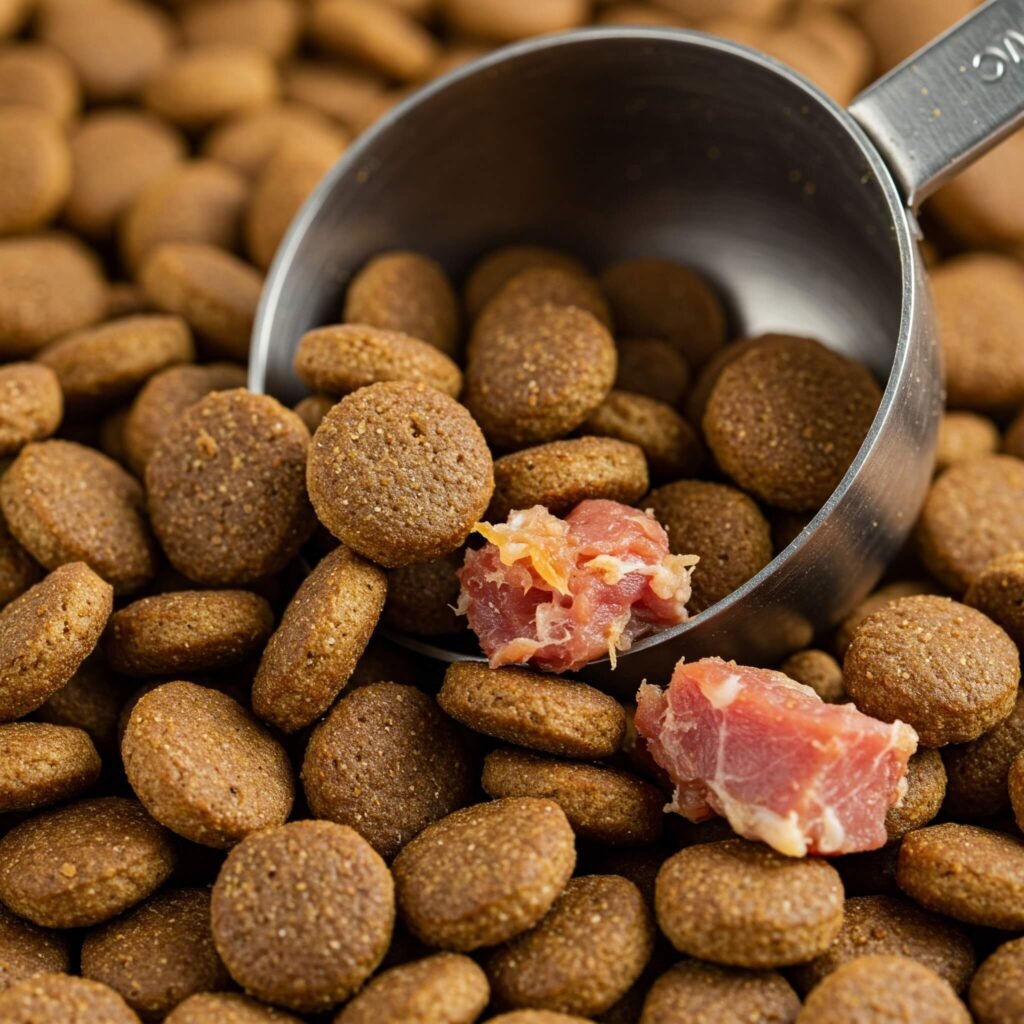As a dedicated dog parent to an energetic or active breed, you understand the constant need for fuel to support their boundless enthusiasm. Just like human athletes, these high-energy companions thrive on a diet rich in quality protein. Choosing the right high-protein dog food is crucial for maintaining their muscle mass, supporting their active lifestyle, and ensuring they have the stamina for all their adventures. This guide will delve into why a diet rich in protein is essential for your furry dynamo and what to look for when making your selection.
The Importance of Protein-Rich Food for Active Breeds
Active and energetic dog breeds, such as Border Collies, Australian Shepherds, German Shorthaired Pointers, and Labrador Retrievers, have unique nutritional needs compared to their less active counterparts. A high-protein dog food plays a vital role in several key areas:
- Muscle Development and Repair: Intense physical activity leads to muscle breakdown. A diet rich in protein provides the essential amino acids needed to rebuild and strengthen these muscles.
- Sustained Energy Levels: While carbohydrates provide quick energy, protein contributes to sustained energy release, keeping your active dog going for longer during hikes, playtime, or training sessions.
- Maintaining a Healthy Weight: Protein helps your dog feel fuller for longer, which can aid in preventing overeating and maintaining a healthy body weight, crucial for agile and active breeds.
- Supporting Overall Health: Adequate protein intake is essential for various bodily functions, including immune system support, hormone production, and enzyme function.

Understanding Dog Food Labels for Active Dogs
Navigating the world of dog food labels can be overwhelming. Here’s what to focus on when choosing a protein-rich diet for your active companion:
- High Percentage of Protein: Aim for dog foods with a protein content of at least 25-30% on a dry matter basis. Very active and working dogs may benefit from even higher levels.
- Named Meat Sources as Primary Ingredients: The first few ingredients should be clearly identified meat sources, such as chicken, beef, lamb, turkey, or fish. Avoid vague terms like “meat meal” without specifying the animal.
- Complete and Balanced Nutrition: Ensure the food is labeled as “complete and balanced” by the Association of American Feed Control Officials (AAFCO). This guarantees it meets all the essential nutritional requirements for your dog’s life stage.
- Limited Fillers and Artificial Additives: Opt for foods with minimal fillers like corn, wheat, and soy, and avoid artificial colors, flavors, and preservatives.
- Healthy Fats: While protein is the focus, don’t overlook healthy fats like omega-3 and omega-6 fatty acids, which contribute to energy, coat health, and cognitive function. Look for sources like fish oil, flaxseed, or chicken fat.

Transitioning Your Dog’s Diet
Switching your dog’s food should be done gradually over 7-10 days to avoid digestive upset. Mix a small amount of the new high-protein dog food with their current food, gradually increasing the proportion of the new food each day while decreasing the old. You can find more information on proper diet transitions on reputable veterinary websites [Outbound Link 1: Placeholder for a link to a veterinary nutrition website].
Real-World Benefits of Protein for Energetic Dogs
Consider the example of “Bolt,” a three-year-old Border Collie who competes in agility trials. Before switching to a diet higher in protein, Bolt often seemed to tire quickly during training sessions. After the transition, his owner noticed a significant improvement in his stamina, muscle definition, and overall energy levels. He recovered faster after intense workouts and maintained a healthy weight despite his high activity level. This real-world scenario highlights the tangible benefits of fueling active breeds with the right nutrition. You might also find our article on [Internal Link 1: Placeholder for a link to a related blog post on understanding dog energy levels] helpful.
Key Considerations for Choosing Food for Active Pups
- Prioritize foods with named meat sources as primary ingredients.
- Ensure the food is “complete and balanced” and appropriate for your dog’s life stage.
- Gradually transition your dog to the new food.
- Monitor your dog’s energy levels, weight, and overall health after the switch.
By understanding the importance of a protein-rich diet and knowing what to look for on the label, you can make informed choices that will help your energetic and active dog thrive. Fuel their adventures with the nutrition they need to live a happy, healthy, and active life! For further reading on specific breed nutritional needs, you can explore resources like [Outbound Link 2: Placeholder for a link to a dog breed-specific nutrition guide]. We also have a guide on [Internal Link 2: Placeholder for a link to a blog post about common dog food ingredients to avoid].








































